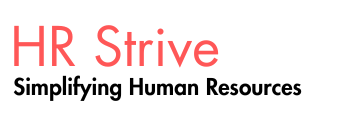Definition:
Communication is the knowledge, skills, and abilities (KSAOs) required to:
-
Craft and deliver clear, concise, and informative messages;
-
Actively listen and respond empathetically to the concerns of others;
-
Translate and transfer information across different levels and units within an organization.
Why Communication Is Core to HR
In the field of Human Resources, communication is not a single skill, but a complex and dynamic set of behaviors and tools that influence every aspect of the profession—from frontline service delivery to high-level strategic planning. It plays a foundational role in:
-
Handling employee relations and grievances
-
Mediating conflict
-
Explaining policies and procedures
-
Leading change initiatives
-
Communicating organizational values
-
Reporting and recommending to senior leadership
-
Delivering training
-
Ensuring compliance and transparency
Regardless of seniority, from HR assistants to CHROs, communication is a daily tool, and improving this competency enhances both internal influence and organizational credibility.
Core Dimensions of the Communication Competency
1. Crafting Effective Messages
HR professionals must write and speak in a way that is:
-
Clear: Avoids jargon and ambiguity
-
Concise: Gets to the point without unnecessary details
-
Accurate: Ensures factual correctness and consistency
-
Audience-appropriate: Tailored to the knowledge level, background, and interests of the audience
This includes mastering written formats such as emails, reports, policies, and formal letters, as well as verbal formats like presentations, briefings, and meetings.
2. Listening and Responding
Active listening is essential, especially in emotionally charged or complex situations. This involves:
-
Giving full attention and withholding judgment
-
Asking clarifying questions
-
Reflecting and paraphrasing to confirm understanding
-
Responding with empathy and tact
Active listening supports better employee engagement, trust-building, and effective conflict resolution.
3. Translating and Bridging Information
HR often serves as a bridge between different organizational levels (e.g., executive management and frontline staff) or units (e.g., operations and finance). Communication competency includes:
-
Reframing technical, strategic, or operational content so it is understood by others
-
Ensuring upward communication (e.g., employee voices reach senior leadership)
-
Ensuring downward communication (e.g., policies and decisions are clearly understood by employees)
-
Lateral communication between functions or teams
This requires contextual awareness and the ability to shift communication styles between formal and informal, technical and human-centered, written and spoken.
Communication Process and Barriers
The Communication Process:
-
Sender encodes a message
-
Message travels through a medium (email, speech, document, etc.)
-
Receiver decodes the message
-
Feedback is sent to confirm understanding
Common Barriers to Effective Communication:
-
Noise (literal or psychological distractions)
-
Cultural differences and unconscious bias
-
Misinterpretation of tone or intent
-
Emotional defensiveness in sensitive situations
-
Information overload or lack of prioritization
-
Inconsistent messaging across sources
Being aware of these barriers helps HR professionals proactively address and overcome them.
Strategies to Enhance Communication Competency
A. Cognitive and Emotional Skills
-
Critical thinking: Clarifies purpose, logic, and consequence of communication
-
Emotional intelligence (EQ): Enables better handling of conflict, sensitive topics, and interpersonal dynamics
-
Empathy: Builds trust and improves reception of messages
B. Physical Presence
-
Nonverbal cues (e.g., eye contact, posture, tone, pacing) affect message credibility and emotional impact
-
Professional demeanor during difficult conversations projects confidence and calm
C. Media Mastery
Different formats and tools demand different skills:
-
Email: Clarity, tone, formatting
-
Video conferencing: Eye contact, voice modulation, technical fluency
-
Reports and dashboards: Data storytelling, visual clarity
-
Public speaking: Persuasion, pacing, presence
-
Social media/PR: Branding consistency, tone alignment
Being proficient across these media is key to consistent and effective organizational communication.
Applications of Communication in HR Scenarios
| HR Function | Communication Role |
|---|---|
| Recruitment | Crafting job postings, interviewing, offer negotiations |
| Employee Relations | Listening to grievances, facilitating mediation |
| Learning & Development | Conducting training, preparing manuals, delivering feedback |
| Organizational Development | Leading change management communications |
| Compensation & Benefits | Explaining policies, clarifying reward structures |
| Performance Management | Giving constructive feedback, goal-setting conversations |
| Legal & Compliance | Writing policies, ensuring legal clarity and employee awareness |
| HR Technology | Explaining system use, bridging user needs with tech capability |
Conclusion
The Communication competency is a pillar of strategic HR practice.
It allows HR professionals to influence outcomes, build trust, and act as effective connectors across the organization. Mastery in communication isn’t just about talking or writing well—it’s about delivering the right message, to the right audience, in the right way, at the right time.
By developing this competency throughout one’s career, HR professionals enhance their value as trusted advisors, empathetic leaders, and strategic partners.

No comments:
Post a Comment